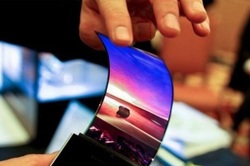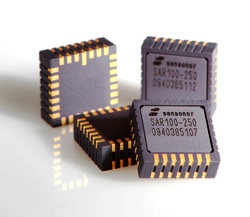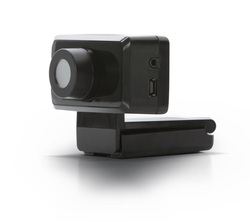Introduction
In video games, whenever the term virtual reality is mentioned, most minds will drift towards the 1995 debacle known as the Nintendo Virtual Boy. The virtual boy was basically a pair of goggles on a small stand. There was no way to strap it to your head, the screen was a low quality red picture, it was uncomfortable, made people sick, and had no games. In other words, it was a disaster. Prepare for a new generation! The Oculus Rift aims to bring virtual reality to the next level. With today's technology, a new bread of virtual reality devices are being developed with high definition picture, motion control input, and extensive developer support to bring a definitive product to quench the thirst of gamers.
What is the Oculus Rift?
The Oculus Rift is a virtual reality headset that allows players to enter video games like never before. Invented by Palmer Luckey, these goggles will work with PC and mobile games to display independent pictures to each eye, creating a 3D environment around your entire vision. The headset comes equipped with sensors that monitor head movement and relay that information back into the world.
Current Status: Prototype
Current Specifications
| Display | |
|---|---|
| Resolution | 960 x 1080 per eye |
| Refresh Rate | 75 Hz, 72 Hz, 60 Hz |
| Persistence | 2 ms, 3 ms, full |
| Viewing Optics | |
| Viewing Optics | 100° Field of View (nominal) |
| Interfaces | |
| Cable | 10' (detachable) |
| HDMI | HDMI 1.4b |
| USB Device | USB 2.0 |
| USB Host | USB 2.0 (requires DC Power Adapter) |
| Positional Tracker USB | USB 2.0 |
| Internal Tracking | |
| Sensors | Gyroscope, Accelerometer, Magnetometer |
| Update Rate | 1000 Hz |
| Positional Tracking | |
| Sensors | Near Infrared CMOS Sensor |
| Update Rate | 60 Hz |
| Weight | |
| Weight | 0.97 lbs (without cable) |
| Included Accessories | |
| Included Accessories | HDMI to DVI Adapter DC Power Adapter International Power Plugs Nearsighted lens cups Lens cleaning cloth |
Integrated Technologies

Samsung OLED mobile phone display
As of the Oculus Rift Developer Kit 2, customer tear-downs have revealed that the higher resolution screen is actually the same screen used in the Samsung Galaxy Note 3. Even more proof of this, the touch module is still attached to the screen, but it is almost impossible to actually touch it. To achieve the higher 75 Hz refresh rate than the phone, the screen has been overclocked.
As of the Oculus Rift Developer Kit 2, customer tear-downs have revealed that the higher resolution screen is actually the same screen used in the Samsung Galaxy Note 3. Even more proof of this, the touch module is still attached to the screen, but it is almost impossible to actually touch it. To achieve the higher 75 Hz refresh rate than the phone, the screen has been overclocked.

Motion sensing technology
The heart behind the immersion of the Oculus Rift is the usage of gyroscopic motion sensors to allow the use to move their head in real life and watch the same happen in the game. Motion sensing in gaming is not a new concept, all modern consoles have motion detecting peripherals. The Wii and Wii U utilize motion detection in every game, all Playstation 3 and 4 controllers come standard with 6-axis motion sensing technology, and Xbox has the Kinect that tracks the user's movement with no controller at all.
The heart behind the immersion of the Oculus Rift is the usage of gyroscopic motion sensors to allow the use to move their head in real life and watch the same happen in the game. Motion sensing in gaming is not a new concept, all modern consoles have motion detecting peripherals. The Wii and Wii U utilize motion detection in every game, all Playstation 3 and 4 controllers come standard with 6-axis motion sensing technology, and Xbox has the Kinect that tracks the user's movement with no controller at all.

Head tracking via camera
Just like a webcam has face detection to keep you in focus at all times, the Oculus Rift utilizes a camera to better the experience. The headset has a large array of infrared lights mounted behind that plastic that are detectable by this camera. This allows spacial tracking of the head at all times and permits motions such as peeking around corners much more accurately than with motion sensors alone.
Just like a webcam has face detection to keep you in focus at all times, the Oculus Rift utilizes a camera to better the experience. The headset has a large array of infrared lights mounted behind that plastic that are detectable by this camera. This allows spacial tracking of the head at all times and permits motions such as peeking around corners much more accurately than with motion sensors alone.
